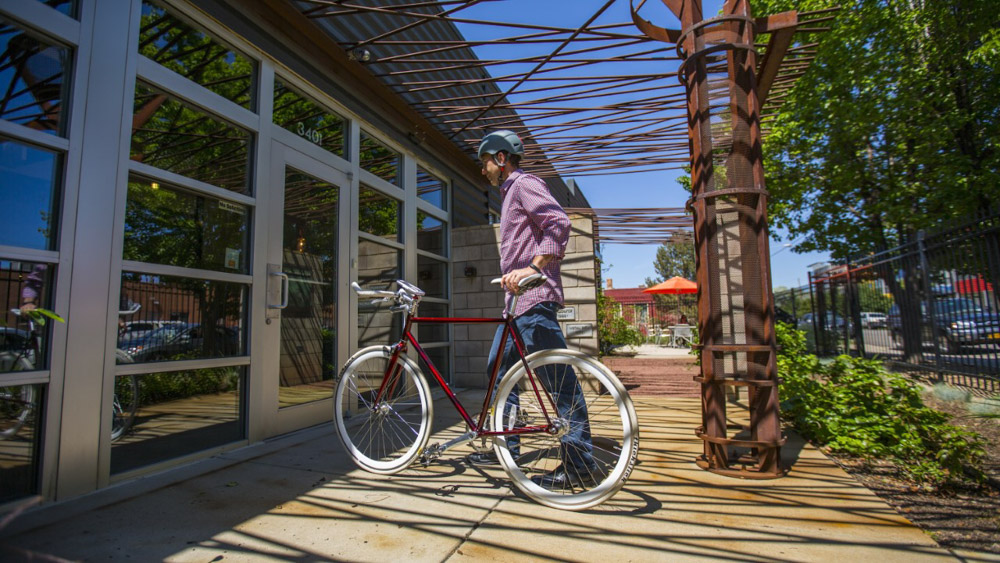Millions of people worldwide are participating in the health movement of Dry January, simply choosing not to drink alcohol for the month.
Because many Americans reported increasing their alcohol intake during COVID, there is concern that consumption has remained high even after the pandemic ended. Health professionals report they are seeing increased drinking habits, especially among women.
Colorado has a high prevalence of excessive drinking, with 20.7% of adults reporting binge drinking in 2023 as compared to the national average of 18.4%, according to the America’s Health Ranking Report.
Individuals who consume alcohol identified improving their physical health and mental well-being as the main reasons for drinking less.
READ: Transform Your Mental Health in the Workplace — Strategies for a Healthier, Happier Experience
The health rewards of drinking less
Keeping alcohol use to a minimum allows good things to start happening in your body. You may find that you sleep better, your mood improves and you’re able to think more clearly. Depending on the rest of your diet, you may even shed a few pounds. You’ll certainly lower your risk of several types of cancer, including throat, esophageal, breast and colorectal cancers, per the National Cancer Institute.
If reducing how much you drink is a personal goal, read on to learn tips and strategies that may help.
Tips and strategies for drinking less
Keep a journal to track your feelings
Knowing when and why you reach for alcohol can help you figure out ways to cut back. But if you’re unsure of your reasons, keep a journal for a week. When you feel the urge to pour a drink, jot down what is making you feel that way, whether physical or emotional. Loneliness and boredom are often big ones. You may also feel stressed, sad, anxious or irritable. Review your journal at the end of the week and look for patterns. Once you find some common themes, you can brainstorm ideas for working around them.
Drink mindfully
For many people, drinking alcohol is almost an unconscious habit — they drink without even thinking about it. For example, maybe you sip wine while cooking dinner or open a beer when you turn on the TV. As you reach for that drink, give yourself a moment to think. Do you really want it, or is it just part of your routine? That’s what mindful drinking is all about. If it’s the latter, you can concentrate on changing the behavior pattern. If it’s the former, have the drink, but stay present in the moment — sit down and savor it.
Change your routine
If you normally have your happy hour at 5 o’clock in the evening, postpone it to 6:30 or 7:00. Distract yourself by taking a walk, going to the gym or flipping through your favorite magazine. You may feel the urge to drink at first, but breaking your routine will help change your habits over time. It just takes practice.
REWAD: The Top 5 Ways You Can Support Mental Health in the Workplace
Try breathing exercises
If you often turn to alcohol when you’re stressed, anxious or irritated, try diaphragmatic breathing — also known as box breathing — before you pour a drink. This deep-breathing method calms the central nervous system and can help you relax. Here’s how it works:
-
- Sit or lie down and slowly breathe out all the air from your lungs.
- Breathe in through your nose for a slow count of four. Aim to fill your lungs and stomach, not just push out your chest.
- Hold your breath for a count of four.
- Exhale for another count of four.
- Hold your breath again for a count of four.
- Repeat the entire sequence three or four times.
- Once you’re calmer and more relaxed, you may find that you no longer need a drink to help you unwind.
Swap alcohol for something else
Even if you do well limiting your alcohol at home, it may be harder to stick to your goals when you socialize, especially if your friends, family and coworkers are all drinking. If you feel pressured to drink when you go out — or you don’t want to draw attention to the fact that you’re consuming less, order something nonalcoholic that still looks like a regular drink. There are plenty of tasty nonalcoholic beverage options to choose from. It can be something as simple as club soda with fresh lime, kombucha or even a nonalcoholic version of your favorite cocktail. You could order a virgin margarita and nobody would be the wiser.
The bottom line
Taking action to drink less puts you in control, so that if/when you do decide to have a glass of wine or a cocktail, it’s a conscious decision, not a mindless habit. And while drinking less can take a bit of planning and effort, the health rewards — for both body and mind — are worth it.
 Dr. Matthew Husa is the Chief Medical Officer, UnitedHealthcare of Colorado.
Dr. Matthew Husa is the Chief Medical Officer, UnitedHealthcare of Colorado.






